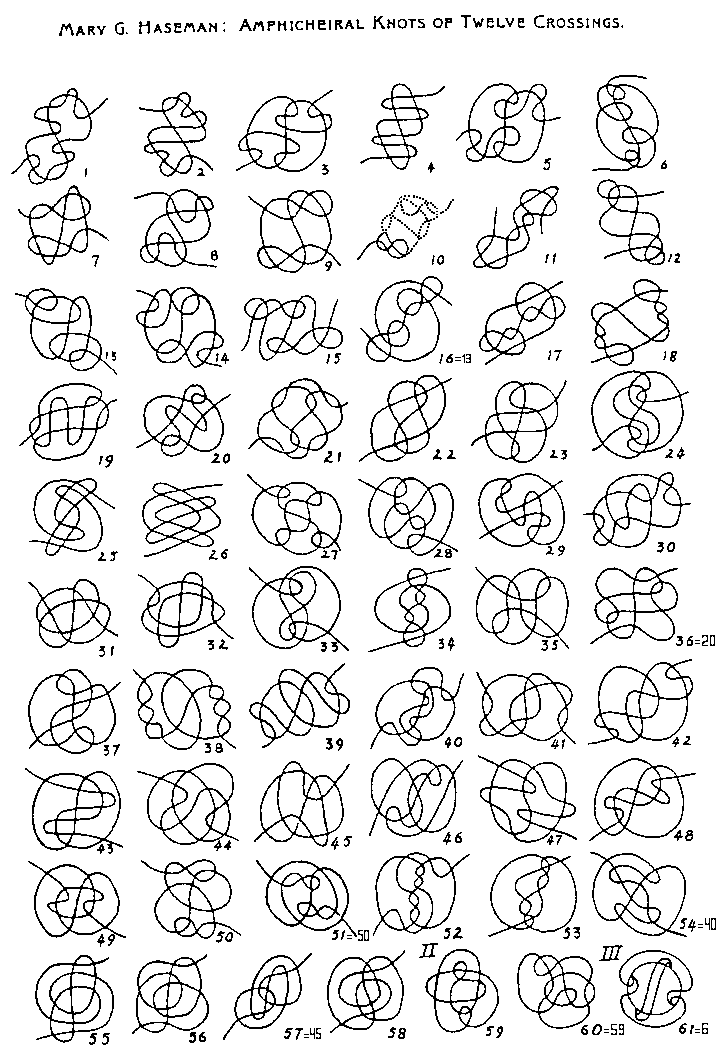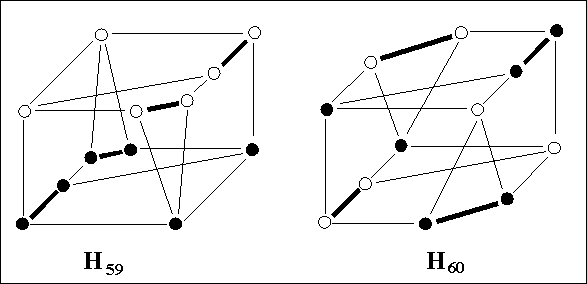

|
Amphicheiral knots with n = 12 crossings are derived by M.Hasseman [47]. After the correction for the knot 10. 26 and identification of 7 duplications [48], their complete list that consists of 54 knots, given by Conway symbols showing their (anti)symmetry, is the following: |
|
01.
62
|
16 = 13
|
31.
12K
|
46.
8*20.20.20.20
|

|
Amphicheiral knot H59=H60 and two of its vertex-antisymmetrical 3D-presentations, based on the antiinversion. |

|
Even in the case when the polynomial d(t) and Liang polynomial are not able to recognize some concealed antisymmetry, it could be seen from the corresponding vertex-bicolored diagrams. For example, in the case of the 14-crossing amphicheiral knot for which the both polynomials failed, its amphicheirality could be explained by the presence of rotational antireflection, i.e. by geometrical antisymmetry arguments. Antisymmetrical knot diagrams, rigid and non-rigid achirality are considered by J.Liang & K.Mislow [22] and E.Flapan [29]. |